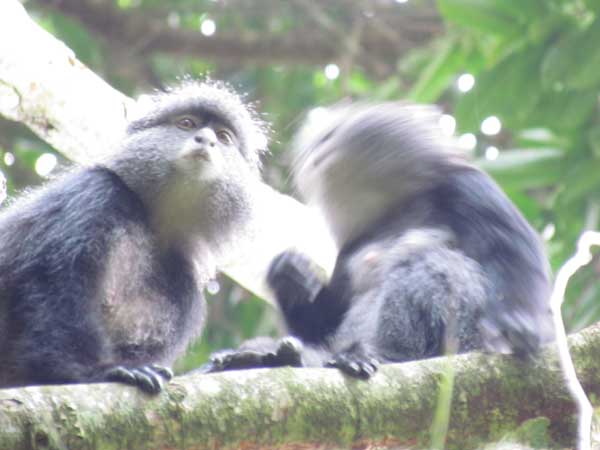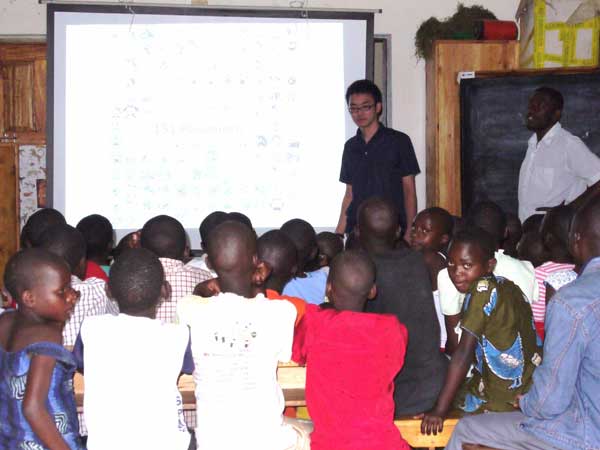Japanese report
AS-HOPE report
Number: AS-23-021
Parasitological research of primates living in Kalinzu forest reserve
Report: Ejima Shun
Date: 2011/7/1 - 2011/7/21
From 4th to 19th July 2011, I stayed at Kalinzu forest reserve and observed primate species living there and collected fecal samples.
I observed 3 species of guenon (Red-tailed monkey, Blue monkey and L'hoest's monkey) and chimpanzees.
About the chimpanzee, I recorded their behaviors and food by using focal sampling method.
In addition, I also collected fecal samples from individuals which I didn't follow and tried to collect as many samples as possible.
About the 3 species of guenon, I recorded their behaviors and food, using both focal sampling and scan sampling methods.
Notably, the L'hoest's monkeys were well habituated to human and it made me possible to see them up close, owing to long term observations by the local staff.
I also had a chance to meet a group of black-and-white colobus and collected their dung, in the same way as guenons.
The fecal samples were put in 50ml polystyrene tubes with70% ethanol and a total of 54 tubes were brought back to Japan.
Sixteen fecal samples from chimpanzees were put in the tubes of ethanol but also in tubes with silica gel, for collaborative work members of the project for
'Sustainable conservation management of isolated primate populations in areas of human habituation', a project of the environment research and technology
development fund of the Ministry of the Environment.
I'm planning to identify the parasite species microscopically and detect DNA from parasites with the PCR method.
Additionally, I gave a lecture for the local children at Kalinzu Forest Education Center, as part of education activity.

Blue monkey

Lecture scenery

L'hoest's monkey
AS-HOPE Project< > >
|




